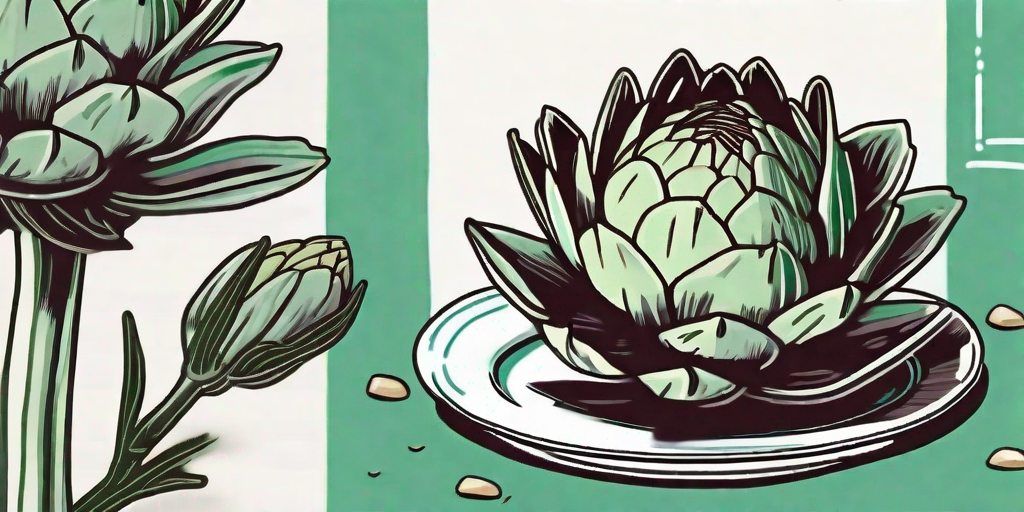
Artichokes, those thorny, leafy, green globes of delight, are a culinary delight that are often overlooked due to their intimidating exterior. But fear not, dear reader, for beneath that prickly facade lies a tender heart that is worth every bit of the effort it takes to reach it. In this comprehensive guide, we'll explore the perfect time to pluck these gems from the earth and how to savor them to the fullest.
Understanding the Artichoke
Before we dive into the specifics of harvesting and savoring, it's important to understand what an artichoke is. The artichoke is a variety of thistle, cultivated as a food. The edible portion of the plant consists of the flower bud before the flowers come into bloom. The budding artichoke flower-head is a cluster of many budding small flowers together with many bracts, on an edible base. More than just a pretty face, artichokes are also packed with antioxidants and have been linked to various health benefits.
Artichokes are native to the Mediterranean region and have been cultivated there for centuries. They grow best in mild climates with cool, foggy summers and are most commonly grown in California in the United States. The plants can reach heights of 3-4 feet and produce several buds throughout the growing season.
When to Pluck Your Artichokes
Seasonality
Artichokes have a peak season in the spring, but they can also be harvested in the fall. The exact timing will depend on your local climate, but generally, you can expect to start harvesting artichokes in late March or early April.
Artichokes are ready to harvest when the bud is fully formed but before the leaves start to open. The bud should feel firm to the touch and the leaves should have a healthy, vibrant green color. If the leaves have started to open and the bud feels soft, it's too late to harvest and the artichoke will be tough and fibrous.
Harvesting Tips
When harvesting artichokes, it's important to use a sharp knife and to cut the stem about 1-2 inches below the base of the bud. This will ensure that you don't damage the bud and that it stays fresh longer.
After harvesting, you should store your artichokes in the refrigerator. They can be kept for up to a week, but are best when eaten within a few days of harvesting.
Savoring Your Artichokes
Cooking Methods
Artichokes can be prepared in a variety of ways, from boiling to grilling to steaming. The method you choose will depend on your personal preference and the specific recipe you're following.
Regardless of the method, it's important to clean your artichokes thoroughly before cooking. This involves removing the outer leaves, trimming the stem and top, and rinsing the artichoke under cold water.
Delicious Recipes
Artichokes are incredibly versatile and can be used in a variety of dishes. They can be stuffed with a mixture of breadcrumbs, garlic, and herbs, then baked until tender. They can also be grilled and served with a tangy aioli, or steamed and served with a simple lemon-butter sauce.
For a truly decadent treat, try making artichoke hearts au gratin. This involves baking the artichoke hearts with a creamy cheese sauce until golden and bubbly. It's a rich and indulgent dish that's sure to impress.
FAQs
- Can I grow artichokes at home?
- Yes, artichokes can be grown at home, but they do require a specific climate to thrive. They prefer mild winters and cool, foggy summers. If you live in a region with these conditions, you can definitely try your hand at growing artichokes.
- What part of the artichoke is edible?
- The edible parts of the artichoke are the inner leaves and the heart. The heart is the most tender and flavorful part of the artichoke.
- How do I know when an artichoke is ripe?
- An artichoke is ripe when the bud is fully formed but before the leaves start to open. The bud should feel firm to the touch and the leaves should have a healthy, vibrant green color.
Conclusion
Artichokes may seem intimidating at first, but once you get the hang of harvesting and preparing them, you'll find that they're a delicious and versatile addition to your culinary repertoire. So don your gardening gloves, sharpen your kitchen knife, and get ready to pluck and savor the humble artichoke.
Remember, the journey to the heart of an artichoke may be prickly, but the reward is oh so sweet.











